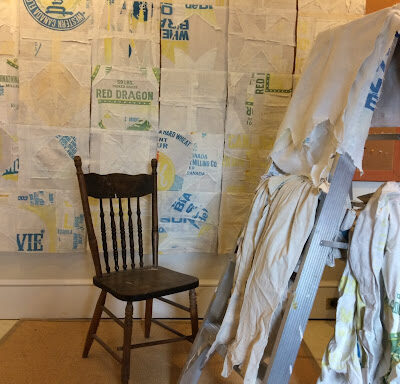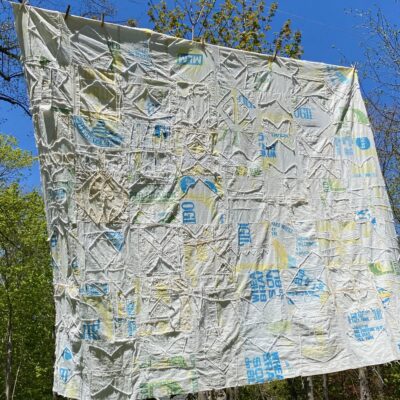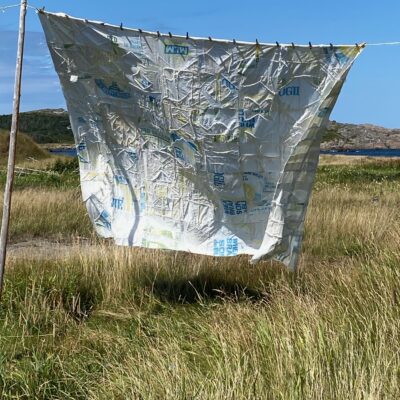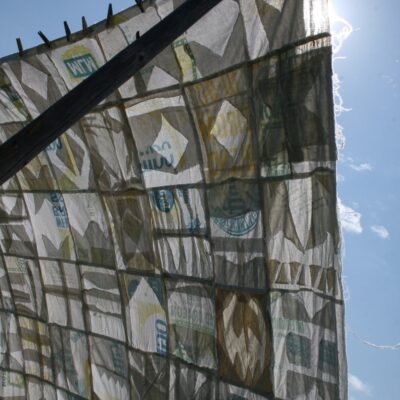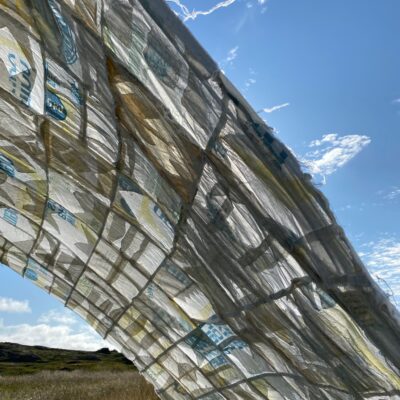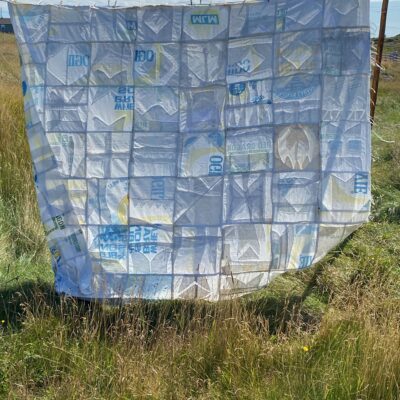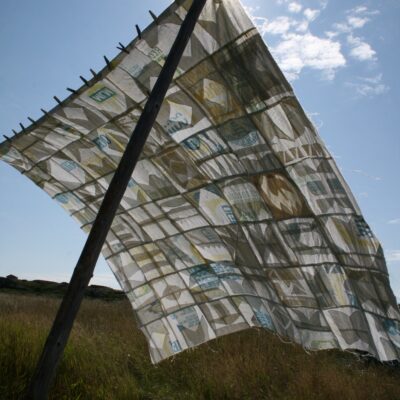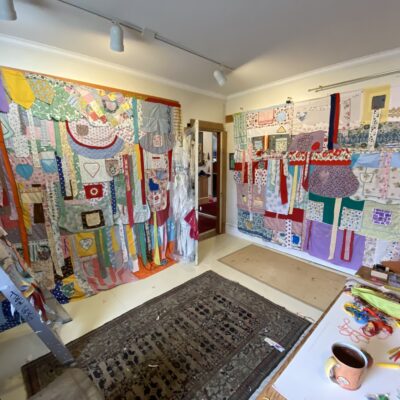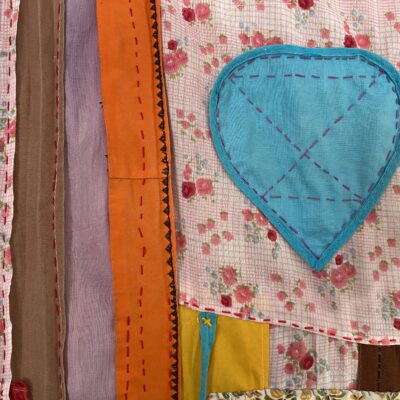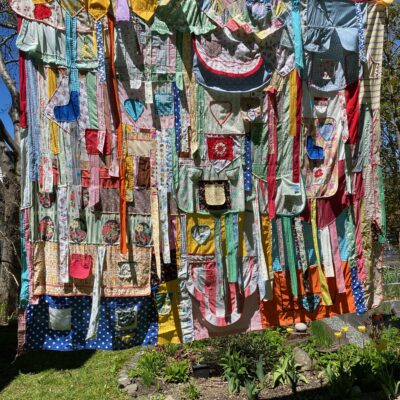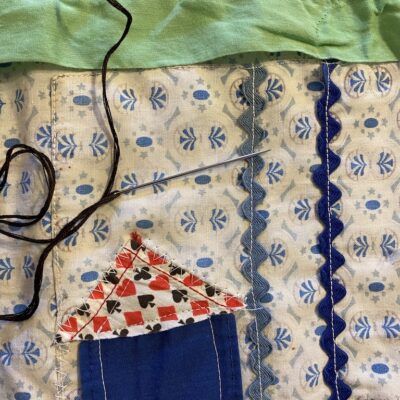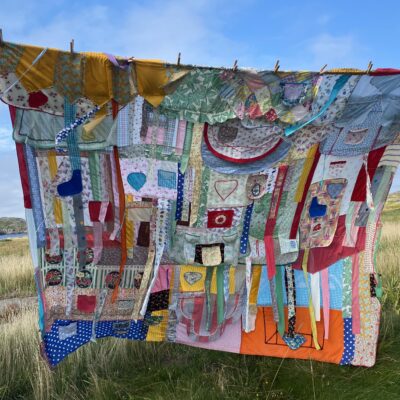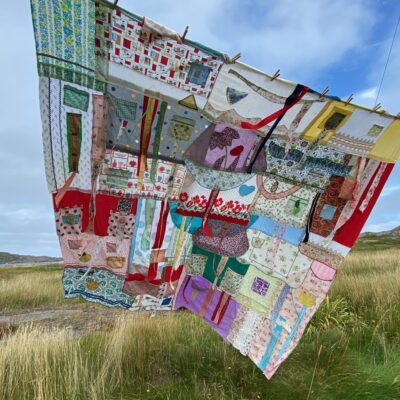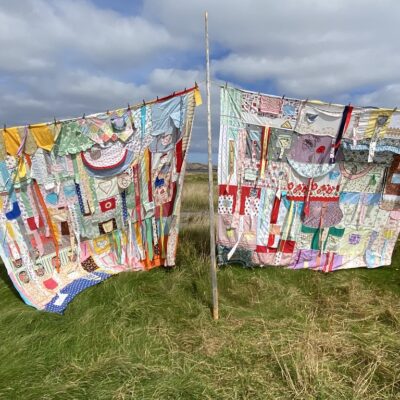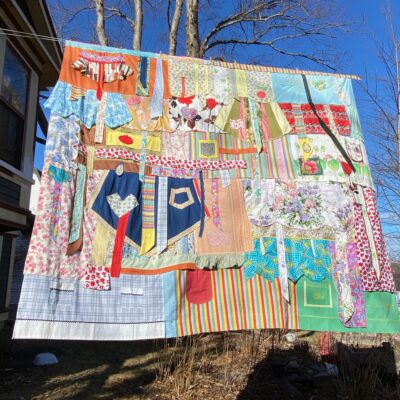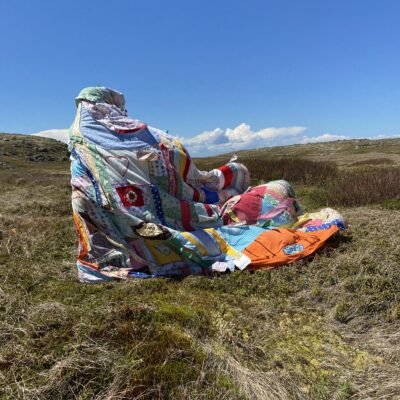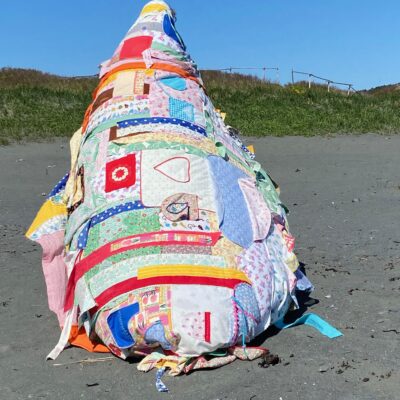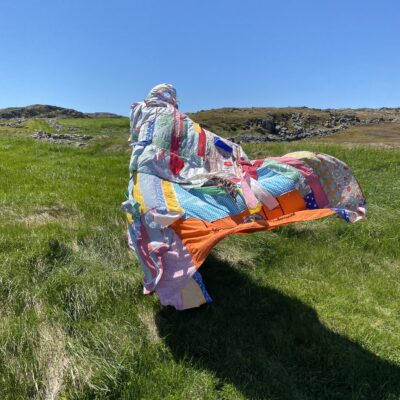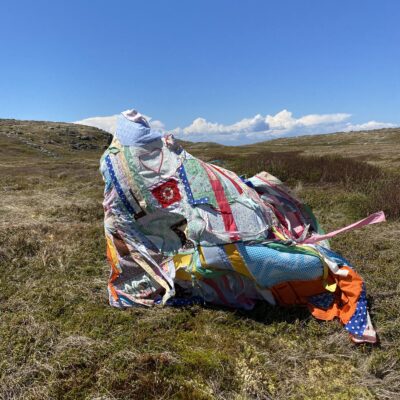The Memory Blankets
The Fish Blanket
Making fish is an old Newfoundland tradition primarily undertaken by outport settler women who salted and dried the codfish that were harvested by inshore fishers. Some women were legendary for how good their fish was and before refrigeration, salt cod was the primary method for preserving this important protein for use and for market. The Fish Blanket emerged from the twenty-five year installation projects Re-Seeding the Dream (1997-98), Reseeding the Dream East(2017), and 30 Days in Tilting(2021). This work, built from the artist’s making of fish-shaped wind socks that fly at various sites, marks and honours this female labour of making fish, at the same time as calling them back home after the devastation of the Cod Moratorium in 1992.

The Fish Blanket was constructed after weeks of unmaking during the first months of the pandemic. It is made from the “skins” of those fish that flew by the North Atlantic… calling up memory of abundance and of women’s labour. Picked apart stitch by stitch, each fish was eventually sewn into a square and were pieced together to form what was intended to carry both past and future… a reminder of the fish that used to be and a projection screen for those that would fly again. As a blanket it claimed its own life on the line… flying in the North Atlantic winds.
In We Wear Our History on Our Skin, the blanket performs as a projection screen for a 10-minute looped video of those fish flying on site in Port Rexton, Bonavista Bay and in Titling, Fogo Island. It is the first of the Memory Blankets.
- The Fish Blanket at the Reardon House, Tilting, Fogo Island, 2021
- memory of abundance, projection test
The blanket first flew in St. John’s and most recently in Tilting, during Pam’s recent residency there. There, for the first time, it served as a screen to reveal the fish flying in the meadow of the Reardon House.
The Women’s Work Blankets
During the pandemic Hall also began to pick apart her collection of vintage aprons stitch-by-stitch. It was peaceful work, this un-making. She stacked ties and pockets, skirt and waistbands – she ironed and sorted – and eventually things wanted to go back together. She pinned and arranged and re-arranged and finally decided to stitch all the pieces together by hand. She sewed most of blankets standing up with the pieces pinned to the wall in her studio. And so the blankets emerged – made for the line, for the wind and for wrapping her up in work memories of other women.
- Women’s Work Blanket #1 in progress
- WWB #1 detail
- WWB#1 hanging in the garden
- Women’s Work Blanket #1
- WWB #2
- WWB 1 & 2- Tilting, Fogo Island
- WWB #3
- WWB #4 – Flying, St. John’s
- WWB #5 in studio
- WWB #5- detail
The blankets are performative on their own, but intended for wrapping and warming women with the memories of women’s work. The labour here is clear and sweet… echoes of the kitchen work these aprons tended to, of the work invested in making the apron, the artist’s work in unmaking and re-making , and also the laundry lines in the wind that are so emblematic of rural life. The wrapping and warming and story-work that will emerge have only just begun… taking the blankets on bodies out onto the land to dance without lines in the wind. Thanks here to Tanea Hynes for lending me her labour, her eyes and for being the body-in-the-blanket for the first live work at Salmon Cove beach and Grates Cove in 2021.
